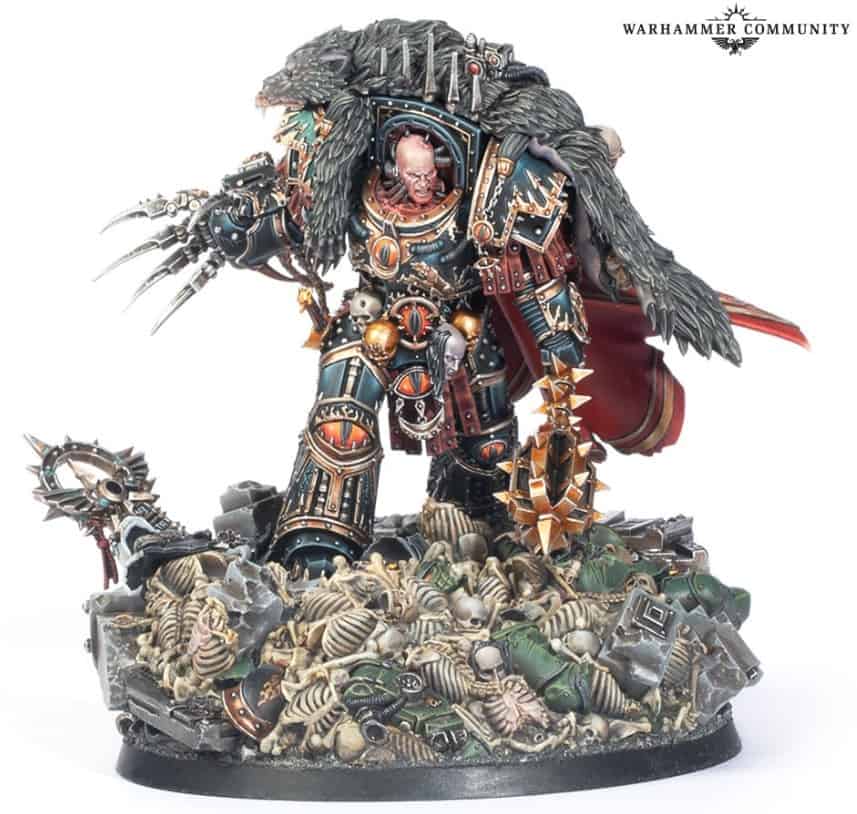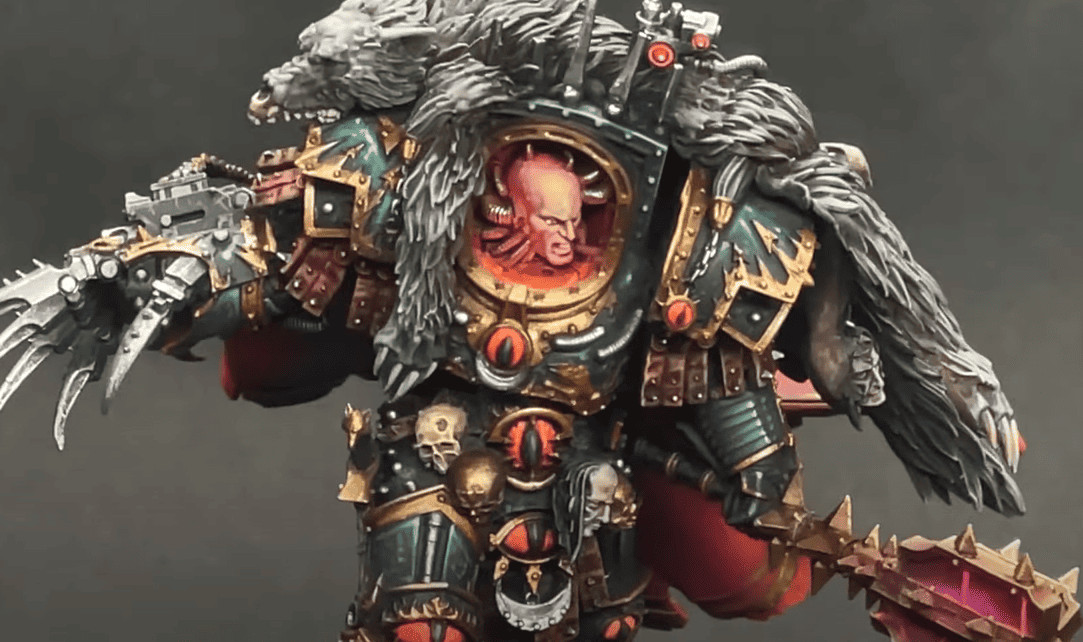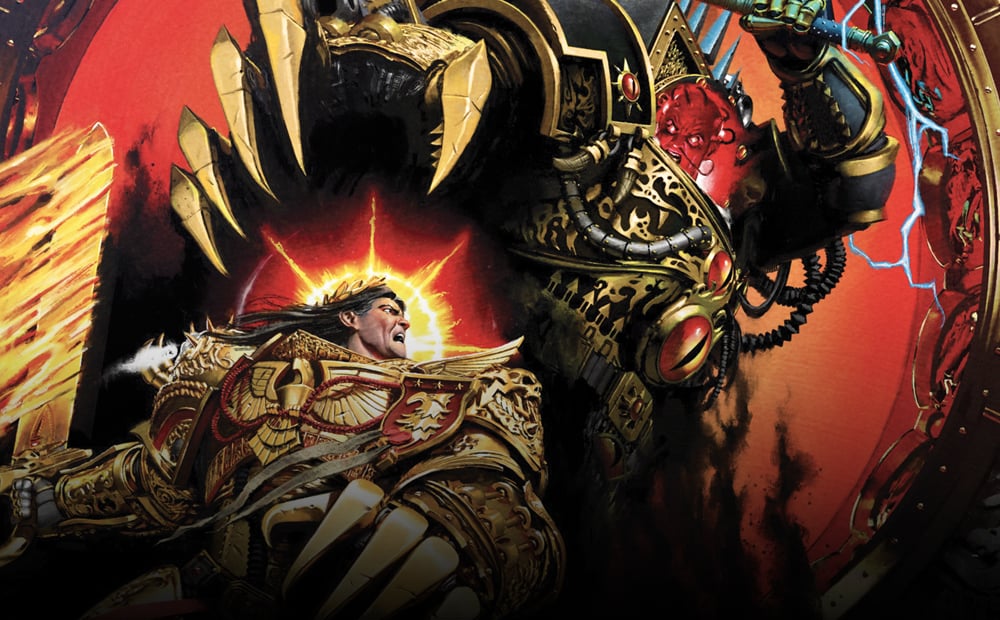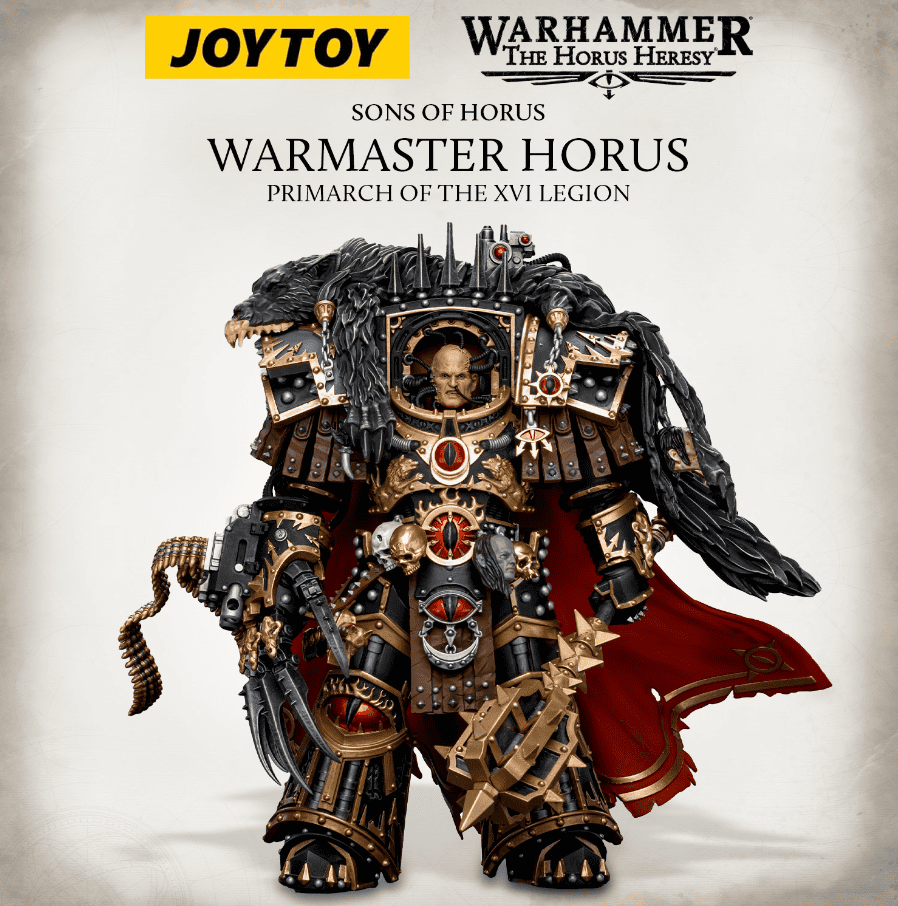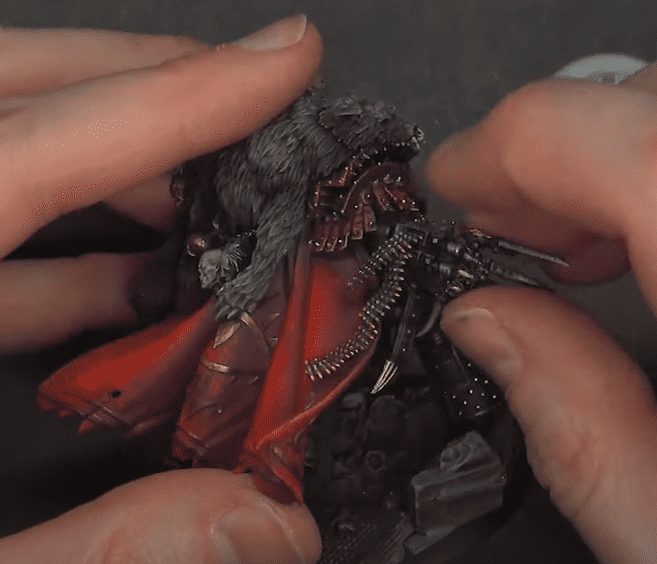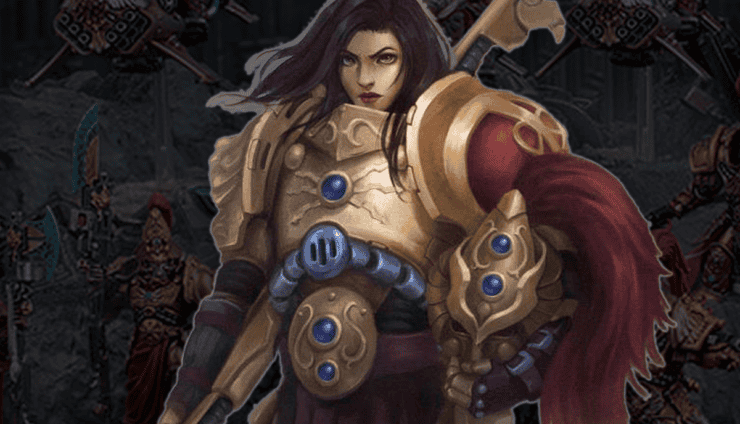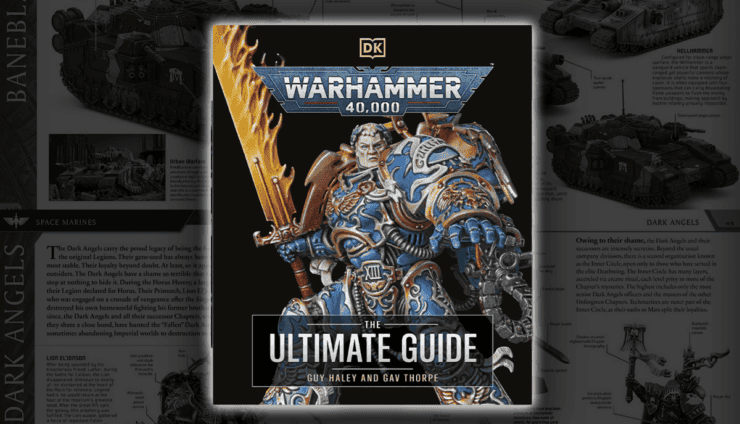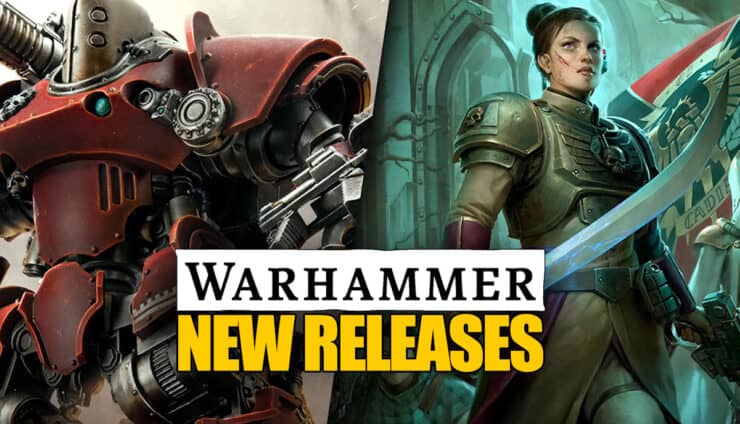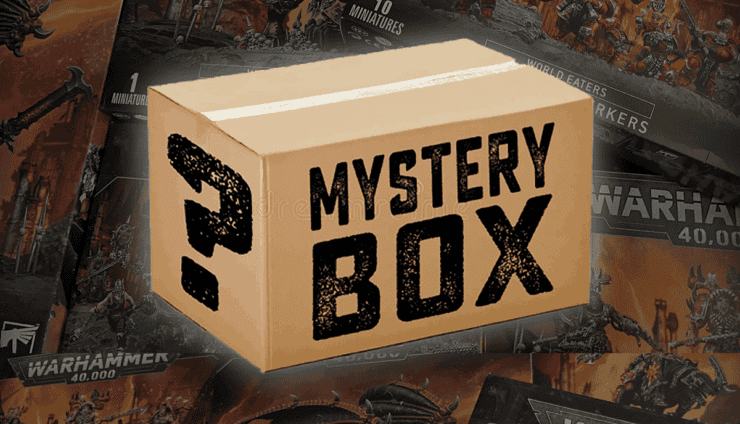A complete guide to Horus Lupercal in Warhammer 40k from his art, towering stature, iconic models, and even the lingering question: could the Warmaster have won the Heresy?
Updated January 2nd, 2025, by Rob Baer with new information and links to relevant content.
If there’s one name in Warhammer 40k that stirs equal parts admiration and bitterness, it’s Horus Lupercal. He’s not just any Primarch—he’s the Primarch.
The Emperor’s golden boy was the very first among his gene-forged sons, and for years, he was the undisputed favorite, even above Sanguinius. Horus was more than a warrior; he was a leader who inspired loyalty, courage, and even a bit of envy.
Horus Lupercal: Art, Models, & Unforgettable 40k Lore
From his early days leading the Luna Wolves to command entire legions as Warmaster, Horus seemed destined to rule alongside his father. But we all know how that turned out…
Click any of the links below to jump to the info you need the most, or just dig in from the beginning.
- Horus Lupercal: Early Life and Rise to Power
- Horus Lupercal’s Betrayal and the Horus Heresy
- Horus Lupercal Model for Warhammer 40k
- The Legacy of Horus Lupercal in Warhammer 40k
- Horus Lupercal Art and Miniatures
- Frequently Asked Questions About Horus Lupercal
Could Horus Lupercal Have Won The Heresy: 40k’s Warmaster Explained
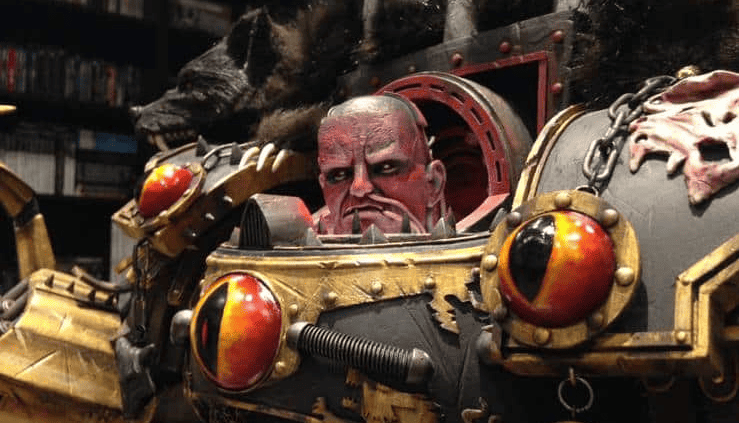
He had powerful allies in his corrupted Primarch brothers, and Chaos itself was fueling his strength. Plus, the Emperor was somewhat distracted by his own secret project—setting up the Imperium’s Webway (a glorified intergalactic subway system)—which meant the throne of Terra was, for a time, vulnerable.
Horus came dangerously close to victory. His forces laid waste to countless worlds, and the Siege of Terra itself nearly succeeded. He even managed to kill Sanguinius (you know, the angelic Primarch who also happened to be one of the Emperor’s favorites) in a one-on-one battle aboard the Vengeful Spirit. But Horus underestimated the Emperor’s power.
When the final showdown happened, the Emperor—initially reluctant to kill his son—struck Horus down with a psychic blast so powerful it obliterated his very soul. The Chaos Gods, ever the gracious benefactors, abandoned Horus in his final moments, leaving him to face the Emperor alone.
So, could Horus have won? Maybe. If the Emperor had delayed his attack a little longer, or if Horus had kept his chaotic powers in check, the war might have turned out differently. But the truth is, Horus’s fate was sealed the moment he made a pact with Chaos.
They were never going to let him be a true ruler. They wanted a puppet, and once he was no longer useful, well, the Gods have no loyalty to their champions.
In the end, Horus’s legacy isn’t one of victory but of tragedy. He had the galaxy in his grasp, but he lost it all—becoming a cautionary tale for anyone thinking of making deals with the powers of the warp. And really, in the grimdark future of Warhammer 40k, could it have gone any other way?
Horus Lupercal: Early Life and Rise to Power
 Origins of Horus Lupercal
Origins of Horus Lupercal
Horus’s story starts like all great sci-fi legends—lost in space. Created by the Emperor in an attempt to forge the ultimate warrior sons, Horus was scattered across the galaxy when a cosmic mishap (or rather, Chaos meddling) sent the infant Primarchs flying off to different worlds.
Horus crash-landed on Cthonia, a planet that wasn’t exactly prime real estate. Cthonia was rough—a world of gangs, violence, and underground wars. Think Mad Max, but with more rubble.
Yet, Cthonia was where Horus honed his skills. Found by local gang leaders, he was raised in the planet’s brutal underbelly, growing into a natural leader. Eventually, when the Emperor came knocking (or rather, landed in style), Horus was reunited with his true father.
The bond between them? Instant. Horus was no longer a gang warrior—he was a Primarch and the Emperor’s right-hand man in the Great Crusade.
The Great Crusade and Warmaster Title
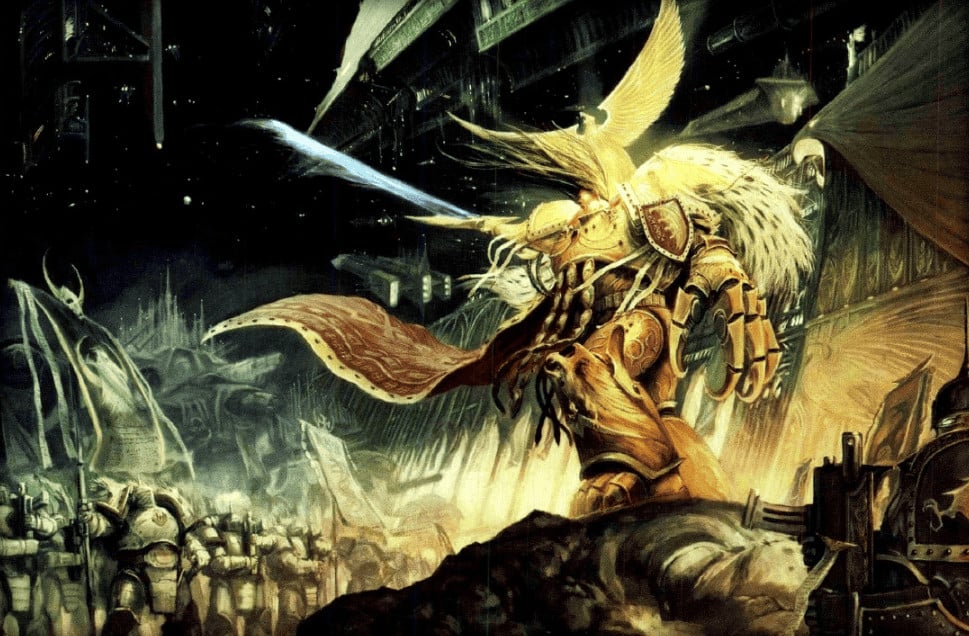
Then came the big promotion: Warmaster. The Emperor, busy with his own mysterious projects, handed over the reins of the Great Crusade to Horus. It was the ultimate vote of confidence. The Warmaster wasn’t just in charge of his legion anymore—he had command over the entire Astartes force, a task he handled with the precision and charisma that set him apart from the other Primarchs.
While his brothers sometimes bristled at taking orders, Horus had the charm and sheer tactical brilliance to keep them in line (mostly).
This period marked the peak of Horus’s career. He had the Emperor’s trust, his brothers’ respect, and the galaxy at his feet. But, as it often goes with meteoric rises, the fall was just around the corner.
40k Horus: The Iconic Figure of Warhammer
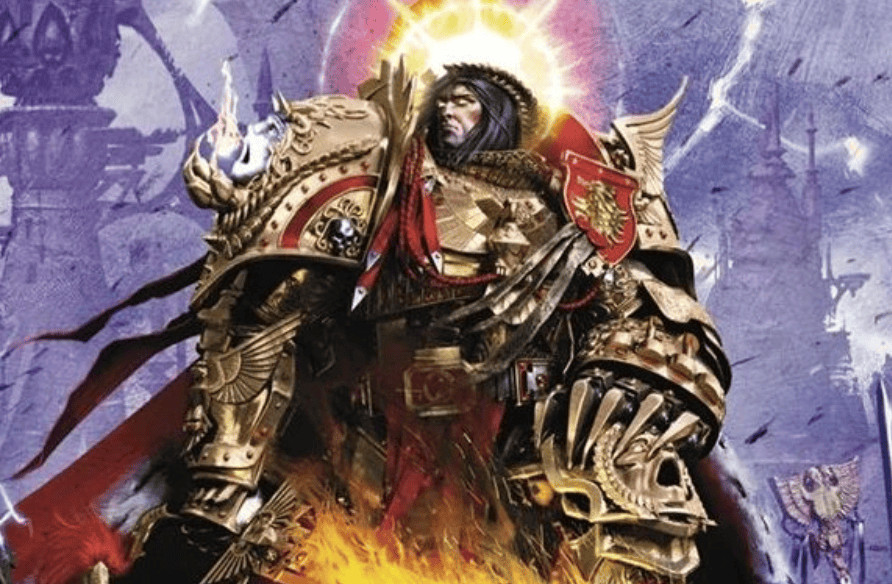
The Warmaster became convinced that the Emperor planned to cast him and the other Primarchs aside once their usefulness had run out.
Bitterness took root, and before long, Horus went from hero to traitor. He turned against the Emperor, launching the infamous Horus Heresy. It wasn’t just a rebellion—it was a full-blown attempt to take over the Imperium, with half of the Primarchs and their legions siding with Horus. This was a betrayal on a scale the galaxy had never seen.
Even in his twisted state, Horus remained a tactical genius, driving the loyalist forces to the brink of collapse. His war machines were relentless, and his ambition knew no bounds. It all culminated in the Siege of Terra, where Horus faced off against the Emperor in a final, brutal battle aboard the Vengeful Spirit.
Spoiler alert: things didn’t end well for Horus. But even in death, his legacy endured. His rebellion fractured the Imperium, and his name became a warning—Horus Lupercal, the fallen Primarch who almost destroyed humanity.
From an artfully crafted miniature to being the figurehead of one of Warhammer’s most monumental story arcs, 40k Horus is more than just a character—he’s a symbol of the seductive power of ambition, the corrupting influence of Chaos, and the devastating impact of betrayal. Whether you’re painting his miniature or debating the finer points of the Heresy, one thing’s for sure: Horus Lupercal remains a towering figure in Warhammer 40k history.
Horus Lupercal’s Betrayal and the Horus Heresy
The story of Horus Lupercal’s betrayal is one for the history books—well, the grim, dark history books of Warhammer 40k. Once the Emperor’s golden boy and Warmaster of the Great Crusade, Horus was the embodiment of loyalty and strength. But as the saying goes, power corrupts, and absolute power?
Well, that brings Chaos knocking at your door with promises too tempting to resist. What followed was a chain of events that would see Horus fall from grace and lead half of the Imperium’s forces into open rebellion, starting the galaxy-rending conflict known as the Horus Heresy.
- Audible Audiobook
- Dan Abnett (Author) - Toby Longworth (Narrator)
- English (Publication Language)
- 01/01/2017 (Publication Date) - Black Library (Publisher)
Last update on 2025-02-21 / Affiliate links / Images from Amazon Product Advertising API
The Corruption of Horus Lupercal
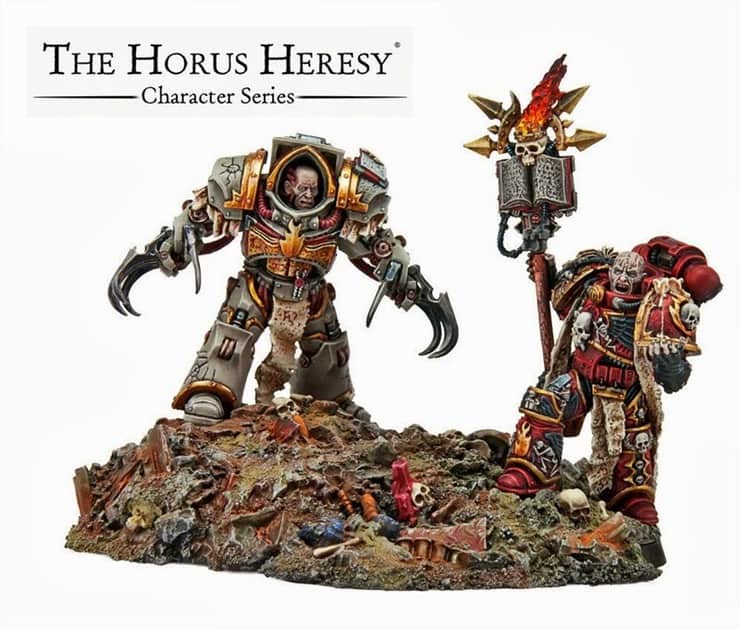
In a moment of weakness (and, let’s be honest, bad advice), Horus sought healing from the shamans on Davin. It was there that the Word Bearers’ Erebus—a chaplain who really ought to have come with a “Do Not Trust” label—introduced Horus to the powers of Chaos.
Chaos, being sneaky, didn’t approach Horus with a pitchfork and horns. Instead, they whispered sweet lies, offering him visions of a future where the Emperor would betray his sons, discard the Primarchs, and crown himself a god. They painted a grim picture of a galaxy where Horus was just a tool destined to be cast aside.
To make matters worse, they showed him that the Emperor had used warp powers (yes, the very thing he forbade his sons from tampering with) to create the Primarchs. Hypocrisy at its finest, right? Horus, furious and feeling duped, saw no other choice but to side with these otherworldly powers.
The Horus Heresy was born out of this deception, with Horus convinced that he was saving the galaxy from a tyrannical Emperor. With a few (okay, a lot of) his brothers joining him in rebellion—Lorgar, Angron, and Fulgrim, to name a few—Horus set out to overthrow his father and seize control of the Imperium.
In truth, though, it was the Chaos Gods pulling the strings, and Horus, their unwitting puppet, danced all the way to the gates of Terra.
How Tall is Horus Lupercal?
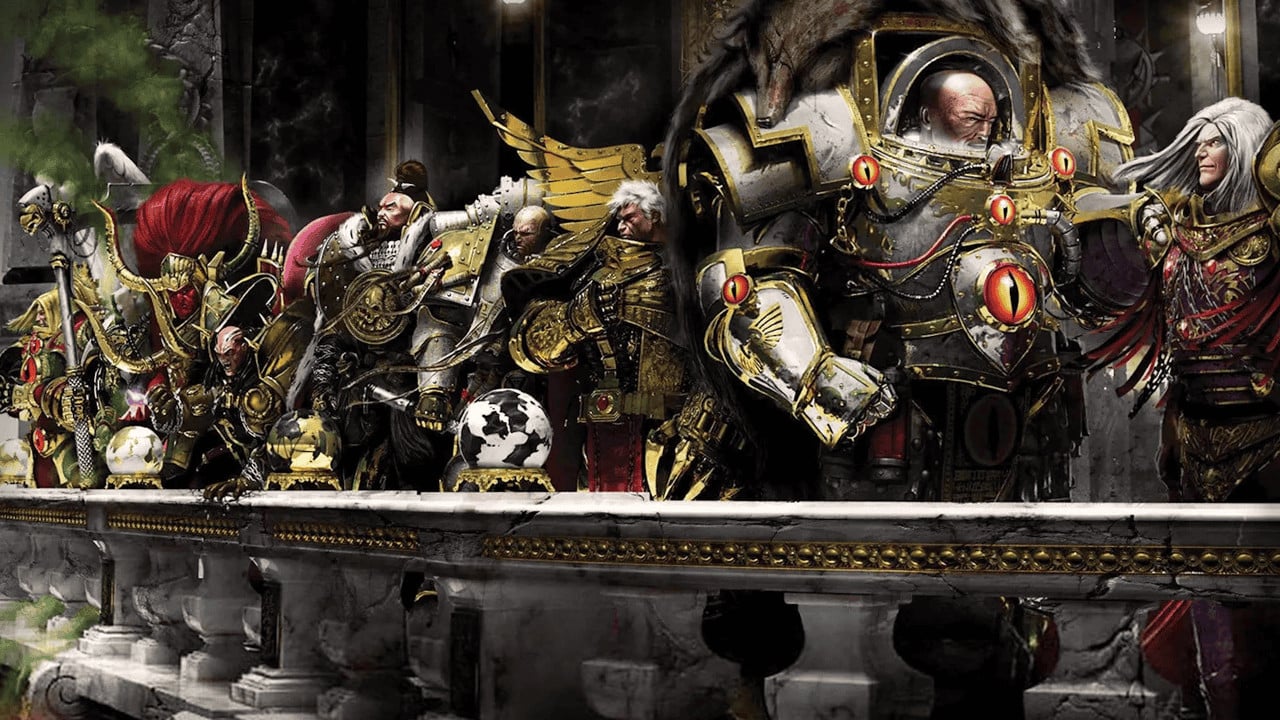
Let’s talk numbers. Horus stands at around 10 to 12 feet tall—and that’s not counting his massive armor. Imagine your average person, then add a few extra feet of muscle, strength, and a not-so-subtle amount of terrifying charisma, and you’ve got yourself a Primarch.
His size alone makes him a dominating figure, and that’s before you throw in the fact that he’s clad in Terminator armor and wields weapons that would crush mere mortals under their weight.
In terms of stature, Horus is right in line with his Primarch brothers. Sure, you’ve got towering figures like Ferrus Manus and the absolute giant that is Vulkan, but Horus holds his own in both height and presence. Of course, the armor adds a few extra inches, giving him that imposing figure that screams, “I’m in charge here.”
His brothers, though equally tall, sometimes pale in comparison to the aura of power Horus exudes—especially when he ascends to Warmaster status.
So, in a nutshell, Horus is massive, both in physical height and in the lore of Warhammer 40k. He stands as a symbol of might and ambition, and his height is just one part of what makes him such an iconic figure.
Horus Lupercal Model for Warhammer 40k & Horus Heresy
When it comes to tabletop gaming, owning the Horus Lupercal model isn’t just about having another Primarch—it’s about showcasing one of the most infamous characters in Warhammer history and capturing all the famous art. The Horus Lupercal model is more than a mini; it’s a statement piece.
Standing tall (no surprise there), this resin-crafted model captures Horus at the height of his power. Whether you’re using him to crush your enemies in battle or just as a collectible centerpiece, he demands attention.
Horus Lupercal Model Overview
The level of detail on this Horus Lupercal model is insane. Every piece of his armor, every line of his face, and every skull on his base has been meticulously designed to reflect the dark grandeur of the Warmaster. You’ll also notice the intricacy of the Serpent’s Scales Terminator armor, which practically radiates the power and authority Horus commands. And let’s not forget his weapons—because a Warmaster needs to be properly armed for destruction.
As a model, Horus is a must-have for any Warhammer fan, whether you’re into lore, tabletop gaming, or just love a good resin collectible. And for those curious about the Horus Lupercal art featured in the model, it beautifully captures the dark, regal, and destructive persona that Warhammer fans know all too well.
How to Paint Horus Lupercal
If you’ve got the Horus Lupercal model, the next big question is: How do you paint Horus Lupercal to do justice to the Warmaster himself? Don’t worry; we’ve got you covered with a step-by-step guide that will have Horus ready to lead your army (or at least look really cool on your shelf). Or, check out all of our painting tutorials here!
- Prime the Model: Start with a black primer to give a solid base. This is crucial, especially for the dark and menacing look Horus is known for.
- Basecoat the Armor: Use Leadbelcher for the metallic parts of his armor. This gives the armor that worn, battle-hardened appearance. For the Serpent’s Scales Terminator armor, a mix of Caliban Green and Nuln Oil will bring out the dark, sinister tones that scream “traitor Warmaster.”
- Detail the Cloak: Horus wears a majestic cloak that needs attention. Use Mephiston Red for the base, followed by Agrax Earthshade for shading, and then finish with Evil Sunz Scarlet for highlights.
- Weapons: For his weapons, the Talon of Horus and Worldbreaker, use Retributor Armour for the gold accents, with Runefang Steel to make them gleam. Don’t forget to add some Blood for the Blood God to Worldbreaker—it’s not just for show, after all.
- Final Touches: Highlight the armor with Stormhost Silver, and add some depth with Druchii Violet for those deep shadows. Finish with Ceramite White on the eyes to give that piercing, terrifying gaze.
Now you’ve got a painted Horus ready to take command. Whether you’re fielding him in battle or just admiring him, you’ll have brought the Warmaster to life.
Features of the Horus Lupercal Model

The Horus Lupercal model isn’t just about aesthetics—there’s a lot more going on under that Terminator armor. First, let’s talk about the base. This model comes with a scenic base, depicting the ruins of a once-great Imperial structure—fitting since Horus was all about toppling the Imperium.
You’ll also find skulls (because what Warhammer model doesn’t need more skulls?), which only adds to the epic feel.
Then there’s the armor. The Serpent’s Scales Terminator armor isn’t just regular power armor—it’s a bespoke piece designed to reflect Horus’s status as Warmaster. With intricate serpent motifs and gleaming metallics, this armor looks both regal and deadly.
Lastly, the weapons. Worldbreaker, Horus’s massive power maul, is nothing short of iconic. This thing looks like it could crush a tank (and it probably has). Then there’s the Talon of Horus, a fearsome power claw combined with a built-in bolter that says, “I don’t need backup, I am the backup.”
These features make the Horus Lupercal model a standout on the tabletop and a perfect representation of 40k’s most infamous traitor.
The Legacy of Horus Lupercal in Warhammer 40k
When it comes to Warhammer 40k, few names hold the same weight as Horus Lupercal. He’s the guy who nearly destroyed the Imperium, the one who dared to go toe-to-toe with the Emperor himself, and the ultimate cautionary tale for power-hungry warlords.
Even though Horus has been dead for over 10,000 years, his legacy still shapes the 40k universe—and the debates among fans are far from settled.
From whether Horus could return to how close he came to victory, there’s no shortage of speculation. So, let’s talk about Horus and what keeps his name so relevant after all this time.
 Can Horus Lupercal Return in Warhammer 40k?
Can Horus Lupercal Return in Warhammer 40k?
Ah, the age-old question: Can Horus Lupercal return? Warhammer fans have been chewing on this one for decades. The short answer? No. The longer answer? Well, that’s where it gets interesting.
Horus wasn’t just killed by the Emperor—he was obliterated. His soul, his body, everything. The Emperor made sure that Horus wouldn’t be coming back for round two by wiping out any trace of his essence, which is kind of a big deal in the Warhammer universe, where resurrection and rebirth are somewhat common.
But then there’s Fabius Bile, the galaxy’s creepiest mad scientist, who decided to poke around in Horus’s remains. Yes, you heard that right—Fabius cloned Horus.
Cloning, however, isn’t the same as resurrection. The Horus clone that Bile cooked up lacked the true essence of the Warmaster. When Abaddon faced off against the clone, it was clear that this “Horus” was just a shadow of the original, lacking the ambition, intelligence, and drive that made the real Horus so dangerous.
Abaddon, clearly not a fan of knockoffs, took him out without a second thought, and that was the end of Clone Horus. So, can Horus return? Unless the writers decide to do something truly wild, the answer is a solid no.
The real Horus Lupercal is gone for good, and even Chaos doesn’t seem too keen on bringing him back.
Why Horus Lupercal is a Central Character in 40k
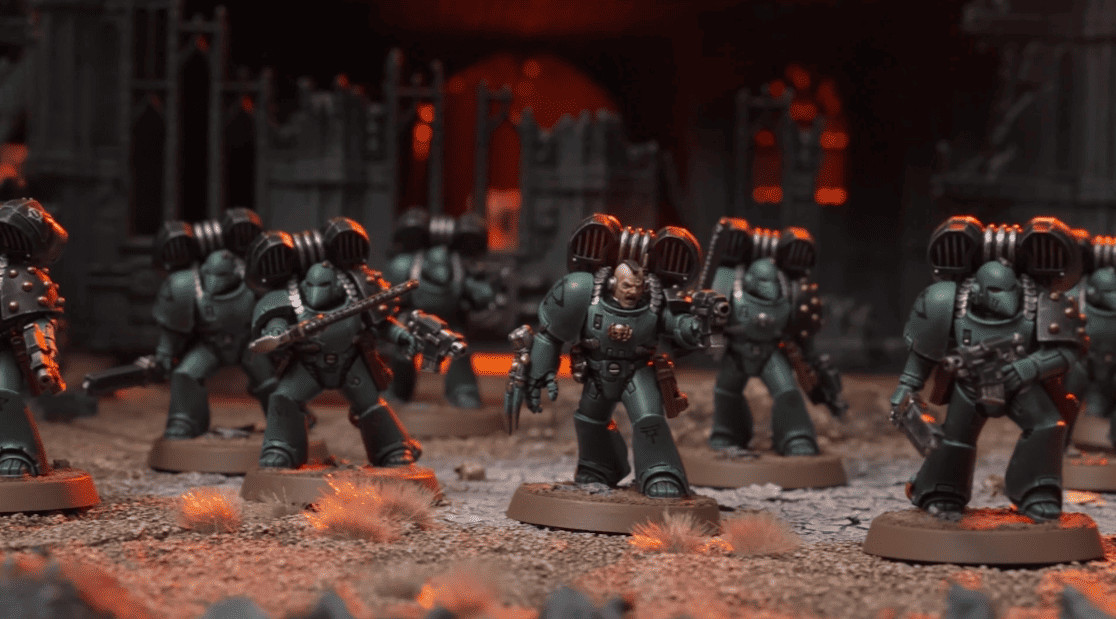
The Imperium as we know it exists because of Horus. The oppressive, militaristic, and deeply paranoid state of the Imperium today is a direct result of his betrayal.
The Horus Heresy was more than just a war; it was a turning point for humanity. The Emperor’s vision of a united, enlightened galaxy died along with Horus, and what was left was a fractured Imperium constantly at war with itself and the forces of Chaos. In many ways, Horus’s legacy is that he forced the Emperor’s hand, creating a dystopia instead of a utopia.
And let’s not forget the cultural impact of Horus in the 40k universe. The Traitor Legions, once loyal to the Emperor, became the Chaos Space Marines because of his influence. Abaddon the Despoiler, who’s been a thorn in the Imperium’s side for 10,000 years, owes much of his power and reputation to being Horus’s heir.
Even now, in the current era of Warhammer 40k, the shadow of Horus looms large. His rebellion set the stage for the eternal war between the Imperium and Chaos, and his name is synonymous with ambition, betrayal, and ultimate tragedy.
In short, Horus Lupercal remains a towering figure in Warhammer 40k, not just for what he did, but for what he represents: the consequences of unchecked ambition, the seductive power of Chaos, and the fragility of even the mightiest heroes.
Horus Lupercal Art & Miniatures
 Horus Lupercal Art Through the Ages
Horus Lupercal Art Through the Ages
If you’re a Warhammer 40k fan, then you’ve probably seen Horus Lupercal’s art in various forms. From the pages of novels to rulebooks and fan art, Horus has been depicted as everything from the loyal, golden child of the Emperor to the full-blown traitor wielding the dark powers of Chaos.
Each piece of art captures a different stage of Horus’s transformation—from a regal figure of hope and leadership to a dark, towering force of destruction.
In the early days of Warhammer 40k novels and rulebooks, Horus was often shown as the stoic yet inspiring leader of the Luna Wolves, dressed in power armor that screamed, “I’m here to conquer worlds, and I’m not asking nicely.” As the lore for Horus Lupercal evolved, so did the art.
The Horus you see in more recent Horus Heresy books is far darker—now wearing his famous Serpent’s Scales Terminator armor, standing amid the burning ruins of the Imperium he once helped build. Fan art, as always, takes this to another level, depicting Horus in epic clashes with the Emperor or in chaotic landscapes, brimming with malevolent energy.
Whether it’s his early days as the Emperor’s most trusted son or his final moments as the corrupted Warmaster, Horus Lupercal art always captures the gravity of his journey and the larger-than-life personality that defines him in Warhammer 40k lore.
Collecting Horus Lupercal Miniatures
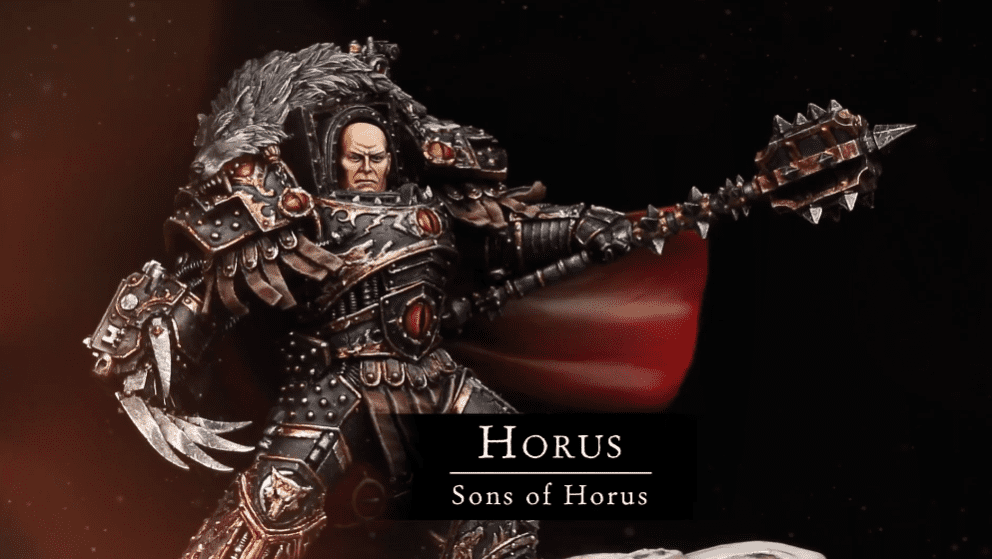
The early models were impressive but a bit more straightforward—Horus standing tall, a symbol of Imperial might. However, as Games Workshop’s crafting techniques with resin improved, the Horus Lupercal miniature evolved into a jaw-dropping work of art.
Now, Horus Ascended is depicted mid-battle, his Talon of Horus crackling with energy, his pose dynamic and aggressive. The model comes with intricate detailing that reflects Horus’s iconic Serpent’s Scales Terminator armor and his brutal power maul, Worldbreaker.
Now, the heretical Warmaster Horus has been released as a glorious JOYTOY Action figure. Horus is currently one of a handful of primarchs from the era who have received a figure, and a dang good one at that! He even comes fitted with both of his infamous weapons, the Worldbreaker and the Talon!
For hobbyists, the Horus model isn’t just a challenge to paint—it’s a project of pride. The detailing allows for advanced techniques like shading, highlighting, and even freehand designs, making it a miniature that can truly stand out on any battlefield or display case.
Over the years, as Warhammer’s technology for crafting resin models has improved, so has the complexity and beauty of the Horus Lupercal miniature, making it a centerpiece in any Warhammer 40k collection.
Frequently Asked Questions About Horus Lupercal
 How Tall is Horus Lupercal?
How Tall is Horus Lupercal?
If there’s one thing we know about Primarchs, it’s that they aren’t exactly subtle. Horus Lupercal, in his full armor, stands at a whopping 10 to 12 feet tall. That’s right, Horus isn’t just commanding attention because of his reputation—he literally towers over most humans.
Compared to other Primarchs, Horus is right in the mix, standing shoulder to shoulder with giants like Ferrus Manus and Vulkan. Whether in art or on the battlefield, Horus’s height (and bulk) makes sure you can’t miss him.
How to Paint Horus Lupercal?
Painting the Horus Lupercal model can be a daunting task, but with the right tools and a bit of patience, you can bring the Warmaster to life. Start by priming the model with a black primer—this will give you a strong base for those darker tones and metallics. For the armor, Leadbelcher with a wash of Nuln Oil will capture that grim, battle-worn look.
Horus’s cloak is a real showstopper, so make sure to base it with Mephiston Red and then add layers of Agrax Earthshade for depth. His weapons, the Talon of Horus and Worldbreaker, deserve special attention—use Retributor Armour for the gold details and Runefang Steel for the metal parts to make them gleam menacingly.
Don’t forget to give the model some battle damage; after all, Horus didn’t get through the Horus Heresy without a few scratches.
Can Horus Lupercal Return in Warhammer 40k?
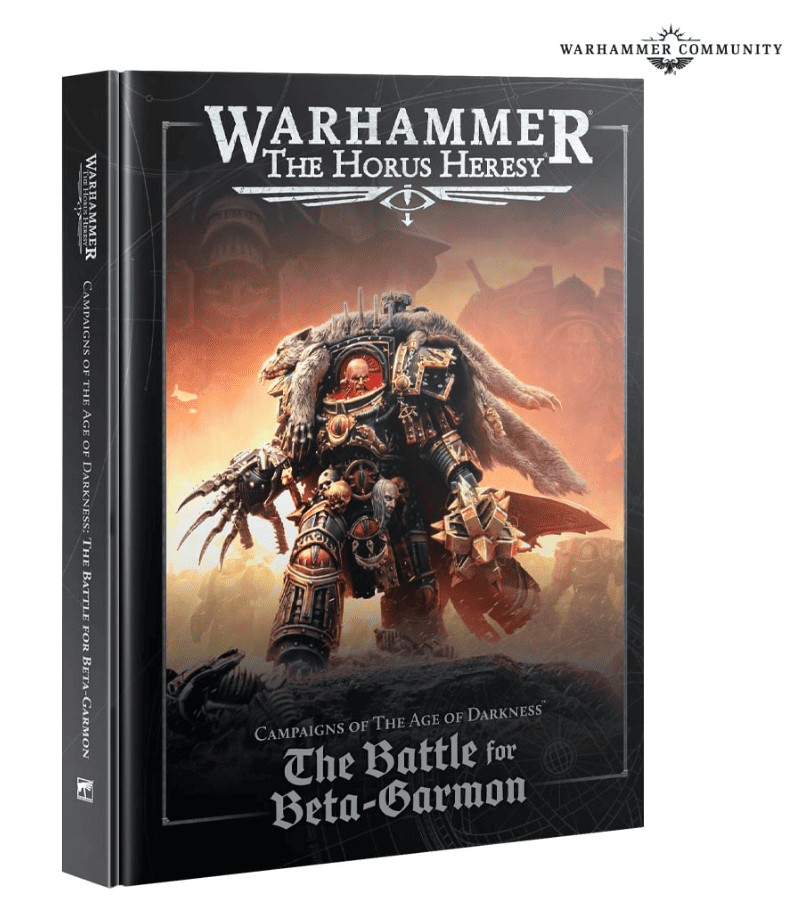
However, that didn’t stop the likes of Fabius Bile from trying to clone Horus. Spoiler: the clone didn’t work out.
Even though his legacy lives on, the chances of the real Horus coming back are slim. Chaos has moved on, and so has the Warhammer 40k storyline. But hey, it’s Warhammer—anything can happen, right?
Could Horus Lupercal Have Won the Heresy?
This is one of the most hotly debated questions in Warhammer lore. Could Horus Lupercal have won the Horus Heresy? In terms of strategy, he had everything going for him—half the Primarchs, a massive military, and the backing of the Chaos Gods. He even got as far as the Siege of Terra, nearly toppling the Emperor’s palace.
But where did he go wrong? Horus’s biggest mistake was underestimating his father and overestimating his control over Chaos. When he lowered his shields to lure the Emperor into a personal duel, Horus made the classic mistake of pride.
The Emperor, though weakened, unleashed his full psychic power and ended Horus once and for all. So, while Horus Lupercal came painfully close to winning, his arrogance and reliance on Chaos sealed his defeat.
Final thoughts on Horus Lupercal
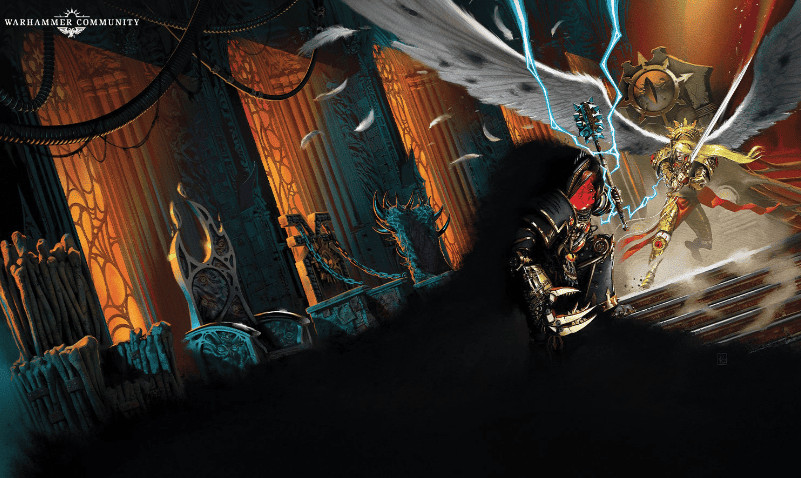
From his towering stature to his iconic model and from his devastating Heresy to the eternal debates about his chances of winning, Horus is always at the heart of Warhammer 40k conversations.
For newcomers, Horus Lupercal is the guy who nearly broke the galaxy (and looked good doing it, especially in the art), and for longtime fans, he’s the reason the Imperium is the paranoid, war-torn nightmare it is today.
Whether you’re painting his miniature, reading his story, or debating his choices, Horus Lupercal’s shadow looms large over the Warhammer universe—and it’s not fading anytime soon.
Warhammer 40k Factions Explained: A Complete Guide to Every Army
What do you think about the lore, art, and models of Horus Lupercal, along with his influence on Warhammer 40k?




